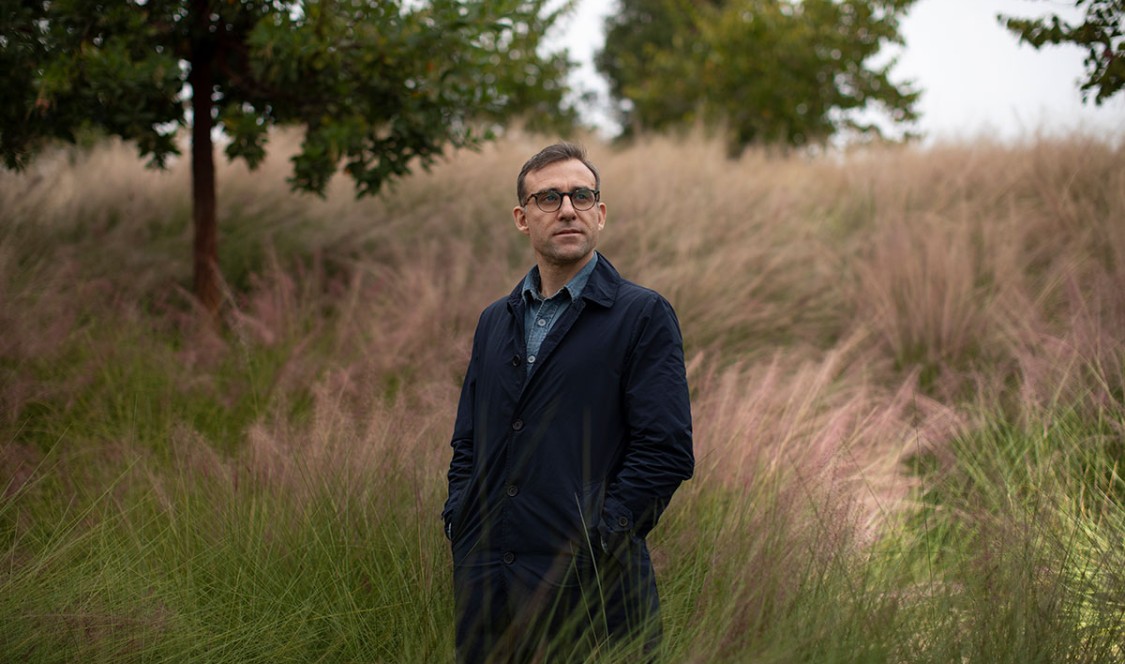Decision points: Piercarlo Valdesolo started the Moral Emotions and Trust Lab at CMC so psychology undergraduates could conduct research and publish papers with professors, a hallmark of CMC. The back-and-forth with lab students has helped Valdesolo strengthen his own ideas about emotions and maximize its purpose academically. Students often have a direct, personal interest in the work. “I teach the stuff every student can relate to,” said Valdesolo. “Everyone knows that emotions affect their lives, so I can easily get my hooks into them. Giving them a third-party perspective makes it easier for them to look at their own emotions and choices without judgment.”
- Piercarlo Valdesolo, Chair and Associate Professor of Psychology, Director of the Moral Emotions and Trust Lab
- Expertise: Social Psychology
- At CMC since: 2011
- Hometown: Boston
Career evolution: While in college, Valdesolo took a class on evolutionary biology in which the professor discussed how different emotional states had evolved. One of those states was jealousy. Valdesolo was going through a break-up with a girlfriend at the time—influenced by what he was feeling, jealousy became the subject of his senior thesis. During graduate school, he began studying the relationship between emotions and morality. While emotions themselves are morally neutral, Valdesolo said, they can lead individuals to make choices society deems right or wrong. “I don’t categorize any emotion as good or bad,” he said. “Psychologists are trained to describe a state and stop there.”
Peak experience: As a kid, Valdesolo spent summers visiting family in Italy who lived near the Dolomites. “I wanted to climb to the highest peak and look around,” he said. “Being out in nature is just something I have always loved.” And it is where he often experiences his favorite emotion: awe. “I am the kind of person who feels awe frequently,” said Valdesolo. “I seek it out.”
This—really—is awesome: To define awe, social scientists look at what prompts the emotion. Valdesolo says two things must be present. “One is the perceptions of vastness—that you are seeing or thinking about something vast—whether it is physical vastness such as a starry sky, or a big idea or concept.” The second ingredient? An inability to immediately understand what you are perceiving. “You aren’t able to wrap your mind around it,” said Valdesolo. People tend to think of awe as something positive, but the uncertainty it triggers also can create anxiety or fear. A starry sky or view from a mountain peak can make someone rejoice in the magnificence of nature—or feel small and insignificant. Experiencing the positive aspects of awe with less anxiety is a matter of becoming more comfortable with uncertainty, said Valdesolo: “The question is, how okay are you with looking around the world and not understanding everything?”
Science vs. God: Valdesolo’s research recently examined how people grapple with understanding awe-inducing moments, usually by turning to religion or science for explanations. He and a colleague examined how two groups—believers and non-believers—reacted to photos of the kinds of nature scenes that stop people in their tracks. Whether people looked to science or religion for clues depended on whether they considered themselves secular or religious in the first place. “People tend to double down on what they already believe,” said Valdesolo.
–Susan Price

